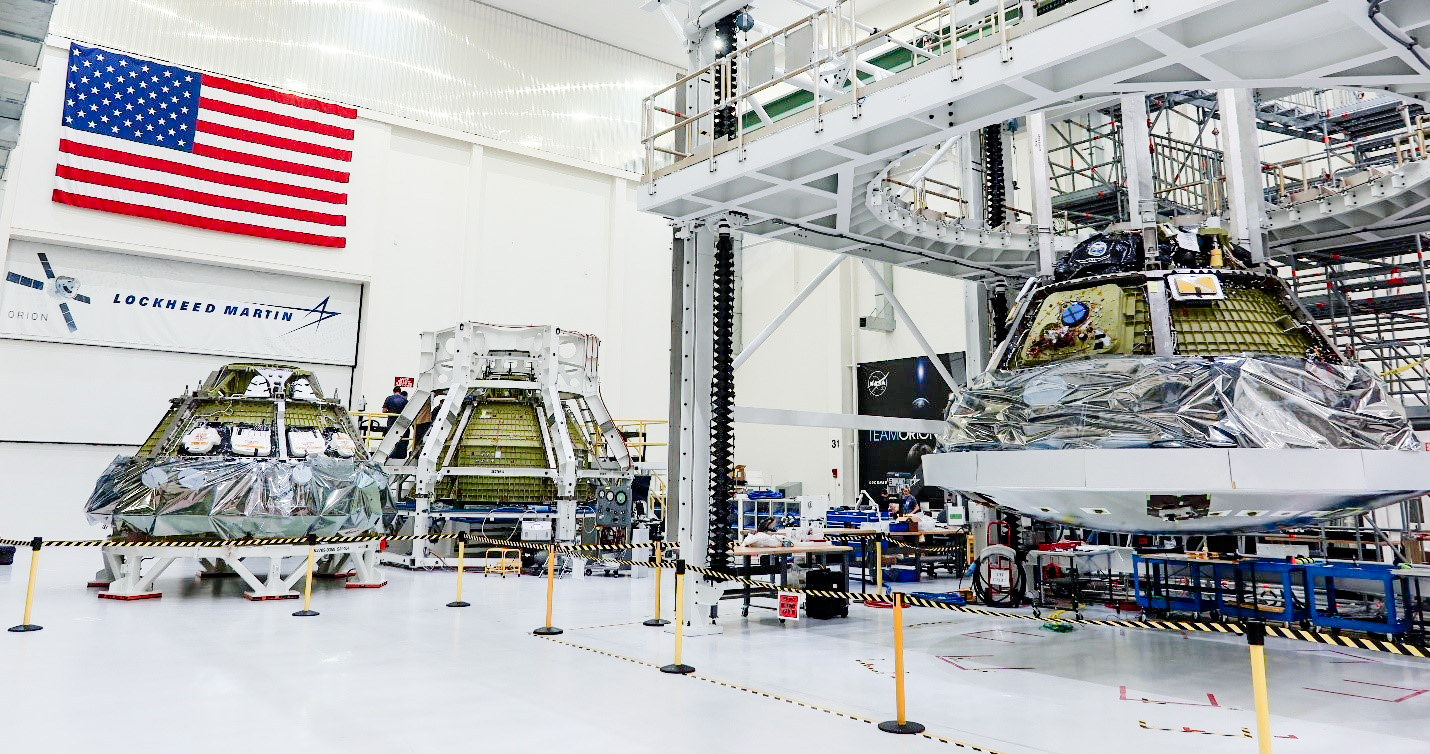Artemis III: A completely new spacecraft.
Artemis IV: A completely new spacecraft.
Artemis V: Will utilize around 250 components, mainly life support and avionics systems, from Artemis II.
Artemis VI: Will incorporate primary structure (pressure vessel) and secondary structures (gussets, panels, brackets, plates) from Artemis III Orion, along with roughly 3,000 components.
Lockheed aims to construct a trio of mostly reusable spacecraft, which will debut in the Artemis III, IV, and V missions, respectively. These three vehicles would subsequently undertake future missions, and if Lockheed needs to grow the fleet to satisfy demand, it has the capability to do so.
This image, taken in 2023, showcases the Orions for Artemis II, III, and IV all together.
Credit:
Lockheed Martin
Naturally, Orion can never be completely reusable. The service module, constructed by Airbus in Europe and responsible for propulsion, detaches from Orion before reentry into Earth’s atmosphere and incinerates.
“We might refer to it as maximum reuse, because some elements are consumed,” Shireman mentioned. “For example, the heat shield is utilized as its ablative material is expended. However, we will ultimately recycle the heat shield’s structure itself.”
Vectoring along a new direction
Orion is expected to remain relatively costly. Nevertheless, officials stated they are on pace to reduce the cost of producing an Orion by 50 percent from the Artemis II to Artemis V vehicles, and aim to decrease this by an additional 30 percent or more in upcoming missions. Reducing refurbishment will be crucial to achieving this.
Lockheed will not achieve “complete and rapid reusability” for Orion as SpaceX is trying with its Starship vehicle. This is simply not how Orion was intended to function, nor is it what NASA desires. The space agency aims for a secure and dependable transport into deep space for its astronauts.
For now, only Orion can offer that capability. In the future, Starship might provide that function. Blue Origin and other companies may create a human vehicle capable of deep space exploration. However, Orion is prepared and set to carry its first astronauts in 2026. It will take years before any alternatives are accessible.
It is encouraging to see that Lockheed is aware this benefit won’t be permanent and that it is adapting—or should we say, Vectoring—toward a more sustainable future.


